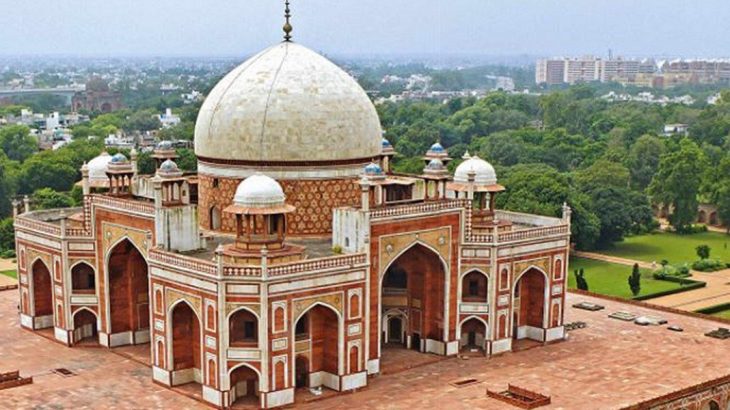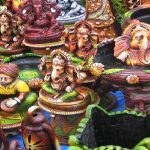Delhi, the capital city of India, is one of the oldest cities in India and also one of the fastest-growing cities in the world. The city attracts national as well as international travellers as part of India tour packages. Historically, the city was known as Indraprastha or Hastinapura, the renowned capital of the legendary Pandavas, which has overwhelming history and rich cultural heritage. The city of Delhi has seen the birth and death of many kings, kingdoms, and dynasties. With the rise of each dynasty, Delhi was beautified by fascinating architecture that has withstood the ravages of time. Red Fort, Jama Masjid, Purana Quila, India Gate, Qutub Minar, Lodi Gardens, Jantar Mantar, Humayun Tomb, Safdarjung’s Tomb, and Rashtrapati Bhavan are the popular historical places to visit in Delhi. However, some of these monuments are recognized as world heritage sites by UNESCO. These heritage monuments attract national as well as international travellers as part of India tour packages.
Here is the list of UNESCO Heritage Sites in Delhi.
Humayun’s Tomb

Humayun’s Tomb is one of the prominent UNESCO World Heritage Sites that one must visit as part of Delhi tour packages. Commissioned by Humayun’s wife, Hamida Banu Begum in 1562, it is the final resting place of Humayun, the second Mughal Emperor, and father of Akbar. It was designed by Mirak Mirza Ghiyath, a Persian architect on the lines of Gur-e Amir, the tomb of Mughal ancestor Timur in Samarkand. Humayun’s Tomb is a fine specimen of the great Mughal architecture, which was inspired by Persian architecture. Surmounted by a large dome built with marble, the octagonal tomb has two double-storied gateways – one on the west and the other on the south. The mausoleum stands in the center of a 30-acre garden known as the Char Bagh and is the first garden-tomb on the Indian subcontinent. The complex of Humayun’s Tomb consists of many small monuments like the tomb of Humayun’s wife, the tomb of Humayun’s barber, Afsarwala tomb and Mosque, Isa Khan Tomb, Bu Halima Garden, and Nila Gumbad. Delhi is one of the most popular India tourist places.
Also Read : Stunning Heritage Sites in India
Qutub Minar & its Monuments

Qutub Minar is the magnificent tower of victory stands in the Qutub Complex located at Aurabindo Marg near Mehrauli in Delhi. It is of the must visit heritage sites in Delhi, among the must-include places in Golden Triangle Tour Packages. Considered as the highest tower in India, it is declared as UNESCO World Heritage Site in 1993. Qutub-ud-Din Aibak laid the foundation of Minar in 1199 AD for the use of the Mu’zzin (crier) to give calls for prayer and raised the first storey, to which three more storeys were added by his successor and son-in-law, Shamsud-Din Iltutmish (AD 1211-36). Built in Indo-Islamic architectural style, the minar has a diameter of 14.32 m at the base and about 2.75 m on the top with a height of 72.5 m (234 feet). The first three storeys are made of red sandstone whereas fourth and fifth floors are made of marble and sandstone. All the storeys are surrounded by a projected balcony encircling the Minar and supported by stone brackets, which are decorated with honey-comb design. Also, there is a Quwwat-ul-Islam Masjid at the base of the minar which is considered as the earliest extant mosque built by the Delhi Sultans and consists of a rectangular courtyard with the carved columns and pillars from 27 Hindu and Jain temples which were demolished by Qutub-ud-Din Aibak as recorded in his inscription on the main eastern entrance.
Book Here : Best 2-Day Trips from Delhi
The Red Fort Complex

Situated on the western bank of the River Yamuna, the Red Fort or the Lal Qila is one of the best historical places to visit as part of Delhi packages, and among the popular honeymoon places in India. Originally called as Quila-i-Mubarak, the fort was built by Shah Jahan between 1638 and 1648 which is enclosed by a rubble stone wall that houses several museums. Surrounded by a deep forbidding moat, the Red Fort is in the form of an octagon with long extended walls on the east and west. Declared as UNESCO World Heritage Site in 2007, the fort has two main gateways namely the Lahore Gate and the Delhi Gate, but the entrance is through the Lahore Gate which forms a part of a massive stone fortification and is made up of pink sandstone. Tourists can be a part of a sound and light show that takes place every evening which recreates the Red Fort’s history. Besides, this is the place from where the prime minister addresses the nation every year on Independence Day (15 August).
Book Here : Honeymoon Tour Packages
























